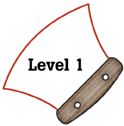|
National Science Education Standards
Each plant or animal has different structures that serve different functions
in growth, survival, and reproduction. For example, humans have distinct
body structures for walking, holding, seeing, and talking. (Page 129)
Plants and animals have life cycles that include being born, developing
into adults, reproducing, and eventually dying. The details of this life
cycle are different for different organisms. (Page 129)
|
|
Benchmarks
Some animals and plants are alike in the way they look and in the things
they do, and others are very different from one another. (Page 102)
Plants and animals have features that help them live in different environments.
(Page 102)
Stories sometimes give plants and animals attributes they really do
not have. (Page 102)
|


